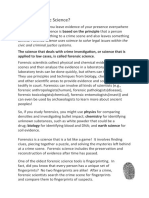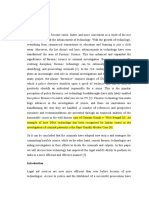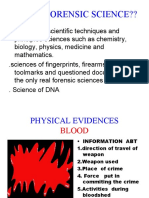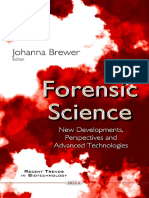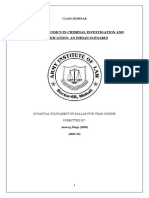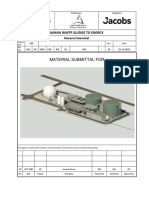0% found this document useful (0 votes)
7 views4 pagesForensic Science
The document outlines various advanced forensic techniques, including DNA phenotyping, 3-D crime scene mapping, and digital forensics, which enhance investigative capabilities. It highlights the use of modern technologies such as hyperspectral imaging, virtual autopsies, and AI-powered analysis to improve the accuracy and efficiency of forensic investigations. Additionally, it discusses specialized methods like diatom analysis and advanced ballistics analysis that provide critical evidence in solving crimes.
Uploaded by
t88830562Copyright
© © All Rights Reserved
We take content rights seriously. If you suspect this is your content, claim it here.
Available Formats
Download as PDF, TXT or read online on Scribd
0% found this document useful (0 votes)
7 views4 pagesForensic Science
The document outlines various advanced forensic techniques, including DNA phenotyping, 3-D crime scene mapping, and digital forensics, which enhance investigative capabilities. It highlights the use of modern technologies such as hyperspectral imaging, virtual autopsies, and AI-powered analysis to improve the accuracy and efficiency of forensic investigations. Additionally, it discusses specialized methods like diatom analysis and advanced ballistics analysis that provide critical evidence in solving crimes.
Uploaded by
t88830562Copyright
© © All Rights Reserved
We take content rights seriously. If you suspect this is your content, claim it here.
Available Formats
Download as PDF, TXT or read online on Scribd
/ 4











